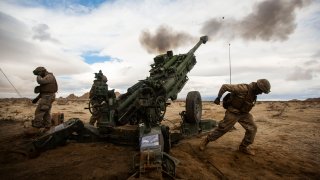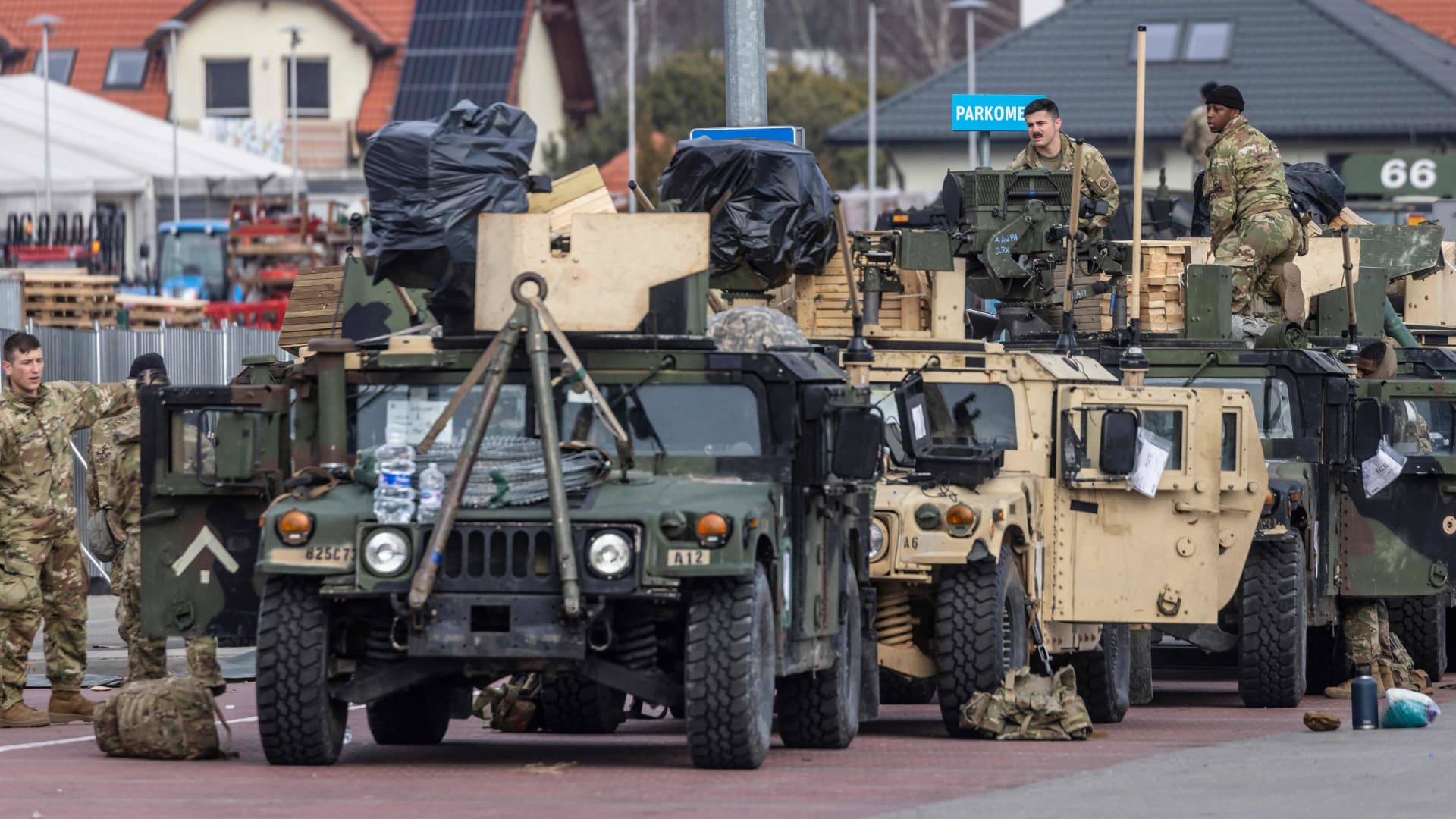
- The White House is expected to announce another military aid package to Ukraine this week, NBC News reported.
- The assistance is expected to be similar to a previously announced $800 million package.
- Pentagon spokesman John Kirby declined to detail items in the upcoming weapons package during a briefing at the Defense Department, citing security concerns.
WASHINGTON — The Biden administration is expected to announce another substantial security assistance package for Ukraine this week, five U.S. officials familiar with the matter told NBC News.
The package is set to be about the same size as the $800 million military aid package President Joe Biden announced last week, three of those officials said.
Get Tri-state area news and weather forecasts to your inbox. Sign up for NBC New York newsletters.
Earlier in the day, Biden confirmed that the U.S. will send more artillery to Ukraine. When asked whether he planned to do so, he paused and replied, "Yes."
The United States has already provided more than 50 million rounds of ammunition to Ukrainian forces. But as troops go through tens of thousands of rounds a day, and fiercer fighting is expected in the coming weeks, there is an urgent need for additional aid.
The need for more artillery was also raised Tuesday morning when Biden joined a secure call with more than a half-dozen world leaders, White House press secretary Jen Psaki told reporters.
Money Report
Pentagon spokesman John Kirby declined to detail items in the upcoming weapons package during a briefing at the Defense Department, citing security concerns. Kirby said that the makeup of previous U.S. security packages comes "directly out of multiple conversations with the Ukrainians."
Among the weapons included in the $800 million security package announced April 13 were 18 howitzer artillery systems, the first known heavy artillery platforms of that caliber to be transferred to Ukrainian forces. The Pentagon also committed 40,000 artillery rounds, from both Army and Marine Corps stockpiles.
Kirby said U.S. service members would begin training a small number of Ukrainian troops on how to use the howitzers "in short order." Kirby added that the training would be conducted outside Ukraine.

The next security package will be the eighth such installment. It comes after U.S. intelligence assessments indicated that the Kremlin will soon focus its military might in eastern and southern Ukraine after weeks of stalled ground advances on the capital city of Kyiv.
In the past seven weeks, Russian forces on the ground in Ukraine have faced a slew of logistical problems on the battlefield, including reports of fuel and food shortages, as well as frostbite.
The Pentagon observed Russian forces carry out a limited offensive in the southwest of Donetsk and south of Izyum, a senior U.S. Defense official told reporters earlier Tuesday.
"We think these offensives are preludes to larger offensive operations that the Russians plan to conduct," said the Defense official, who spoke on the condition of anonymity in order to share new details from the Pentagon's assessment of the war.
The official said that the U.S. expects to send seven more military aircraft carrying security assistance for Ukraine in the next 24 hours.
Since Moscow invaded Ukraine on Feb. 24, the Biden administration has deployed more than 100,000 U.S. troops to NATO-member countries and authorized $2.6 billion in security assistance. The U.S. has provided a total of $3.2 billion to Ukraine since the beginning of Biden's presidency, according to the White House.
In the weeks immediately following Russia's invasion, Western allies sought to draw a distinction between "defensive" and "offensive" weaponry, preferring to send Ukraine anti-tank missiles and anti-aircraft missiles than to provide more heavy artillery.
But as Russia's tactics have grown more brutal, with civilians increasingly targeted in what are likely war crimes, Western leaders have largely dropped the distinction between what is defensive and offensive. The shift is most visible on the battlefield, where increasing numbers of U.S. and European-made battle tanks, howitzers and aircraft are being deployed by Ukrainian forces.






